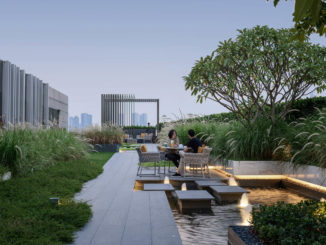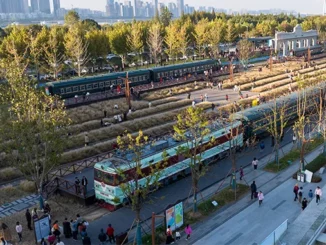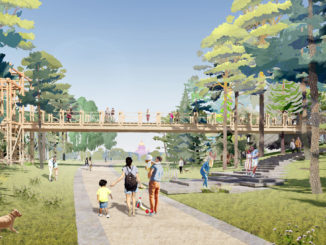Honourable Mentions in the 2021 WLA Awards in the Concept – Design category
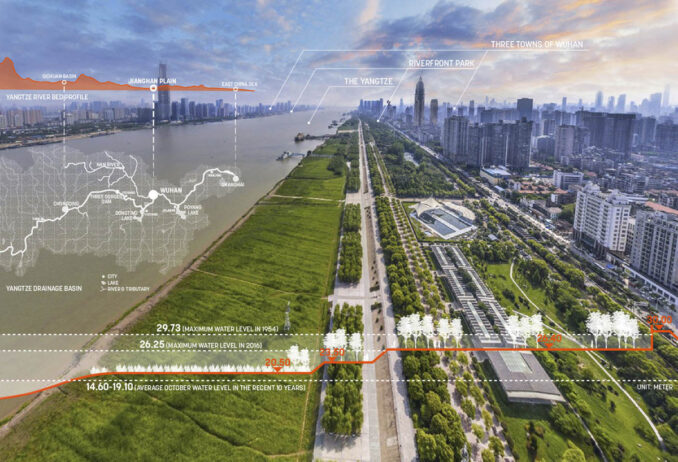
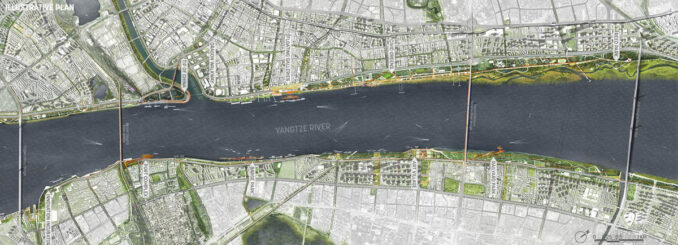
The Yangtze River drains one-fifth of China’s land area and has nurtured its history, culture, and economy for millennia. Despite advancements in engineering that attempted to tame it, damaging floods remain an annual occurrence. Wuhan, central China’s largest city, is re-envisioning its waterfront to not only accept floodwaters, but to embrace them as a driving force shaping its public realm. The plan to improve and expand the Wuhan Yangtze Riverfront Park leverages the river’s dynamic forces to cultivate a rich regional ecology, and rethinks traditional approaches to coexisting with an ever-changing river.
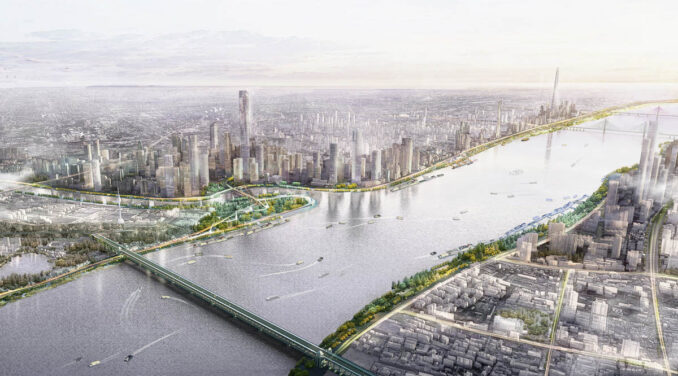
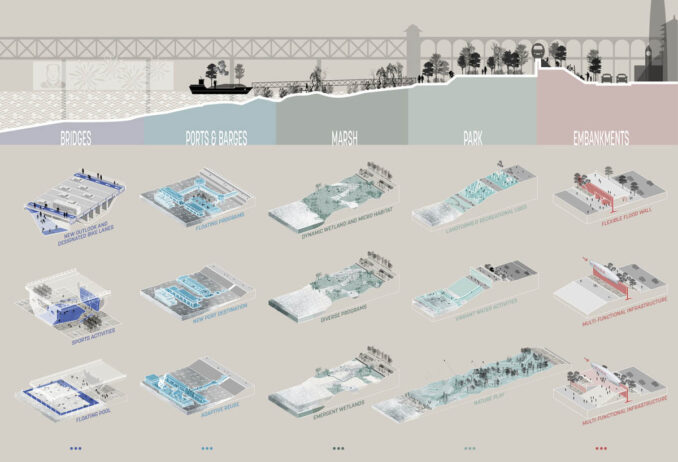
Wuhan’s vernacular has been intertwined with the Yangtze for 1,800 years. Dependent on the river for drinking water, trade, and farming in its fertile sediment, Wuhan and the Yangtze forged a symbiotic relationship until rapid urbanization and higher levees separated the river from the city. After a century of industrial exploitation, the city is piloting a movement to reconcile with the river. Dictated by water levels that fluctuate up to 7 meters, public use of this beloved waterfront space ranges from precarious to perilous. Interaction with the river is so deeply embedded in Wuhan’s culture, however, that people frequent the riverfront even when flooded. The reimagined riverfront park celebrates this heritage, redesigning spaces to celebrate the river’s spontaneity safely, and providing a diversity of recreational experiences that are intimately tied to the seasonal rise and fall of the Yangtze’s waters.
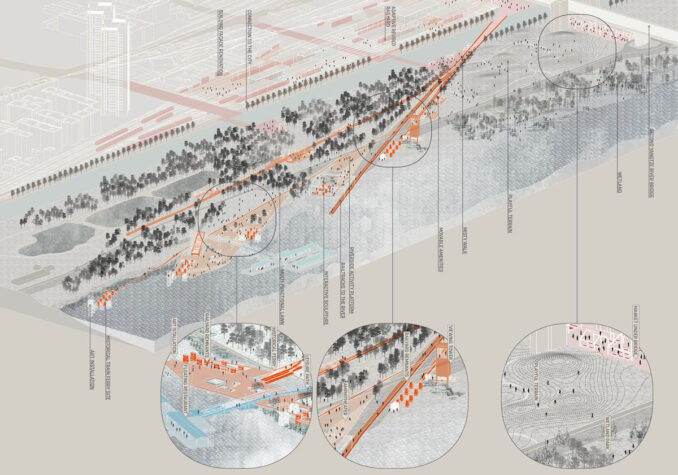
The river’s mudflats play a critical role in supporting biodiversity, providing feeding grounds for migratory birds and spawning habitats for fish. By strategically removing levees, the plan allows for frequent flooding to replenish nutrient-rich sediment and nurture hundreds of hectares of mudflats in the heart of Wuhan. Strategic dredging reestablishes heterogeneous patterns of microenvironments that host a variety of distinct wetland ecosystems. Nuanced topography and fluctuating water levels support complex plant communities ranging from emergent marshes to vernal pools. Sinuous secondary streams are graded to emerge during higher water levels and provide passages for aquatic wildlife and safe corridors for kayaking, allowing for a tranquil experience amidst tall marsh grasses even when the Yangtze roars.
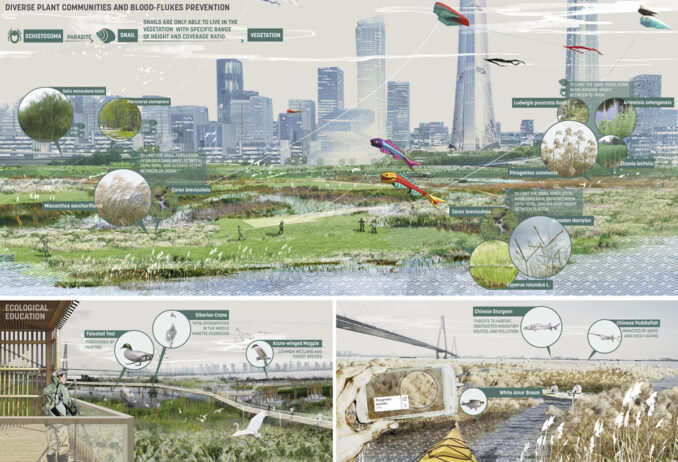
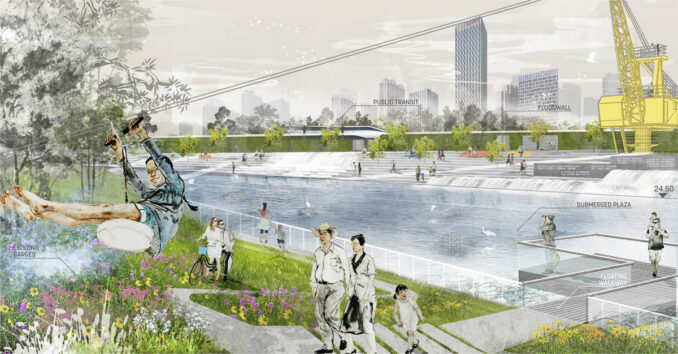
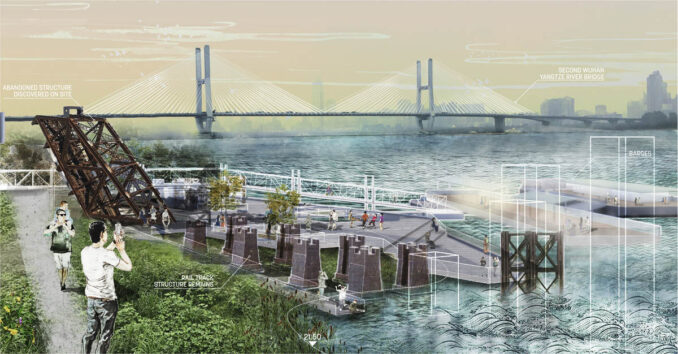
Although most industrial uses along the Yangtze have been relocated, 68 iconic piers and barges within the park remain. Despite the City’s initial strategy of removal, the plan repurposes them for a host of opportunities including community gardens, performance spaces, and a floating promenade which rises and falls with the river. Additional relics including abandoned bridge spans, ramparts, and other outdated infrastructure are repurposed as public art to recall the river’s industrial legacy.
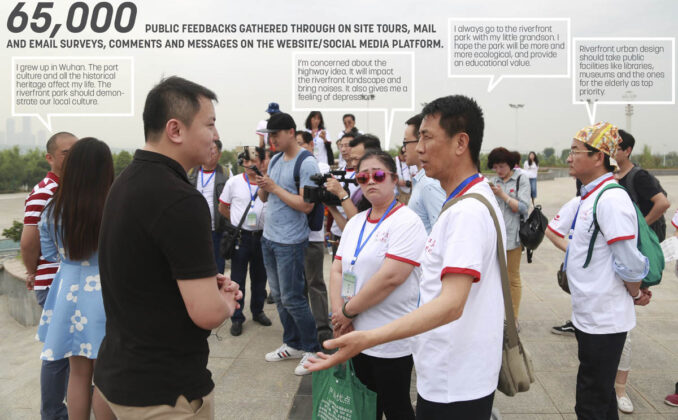
A comprehensive public process resulted in feedback from over 65,000 citizens who provided programming ideas and influenced design iterations. Open meetings, site tours, and community arts events invited residents to convey their vision, while a bespoke website kept the public informed of design progress. Built upon consensus from sustained public outreach efforts, the reimagined Yangtze Riverfront is a socially inclusive, culturally relevant, and ecologically meaningful waterfront that embraces the philosophy of living in harmony with the dynamic river.
Wuhan Yangtze Riverfront Park
Image Credits: Courtesy of Sasaki
Project Credits
Client: Wuhan Land Resources and Planning Bureau
Prime Consultant (Landscape Architecture and Urban Design): Sasaki
Local Consultant (Local Design Institute): Wuhan Planning & Design Institute

